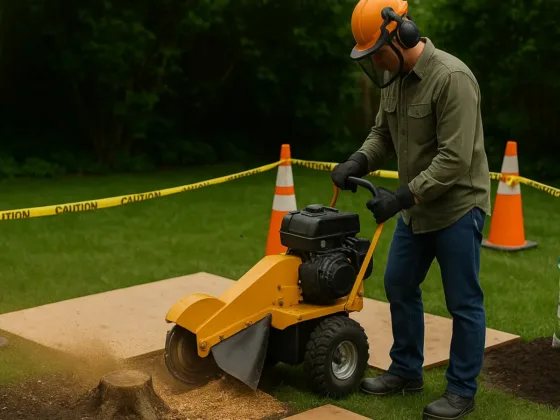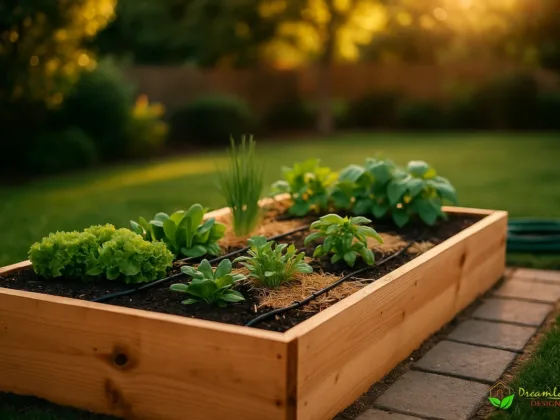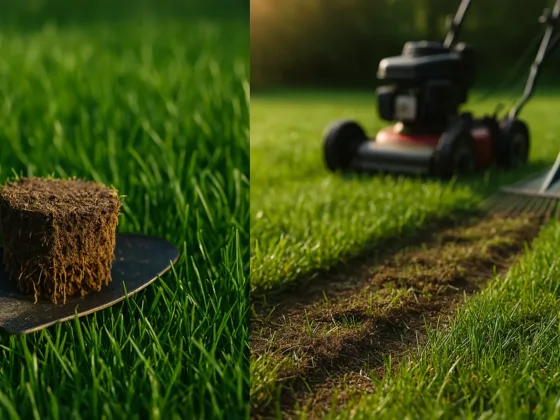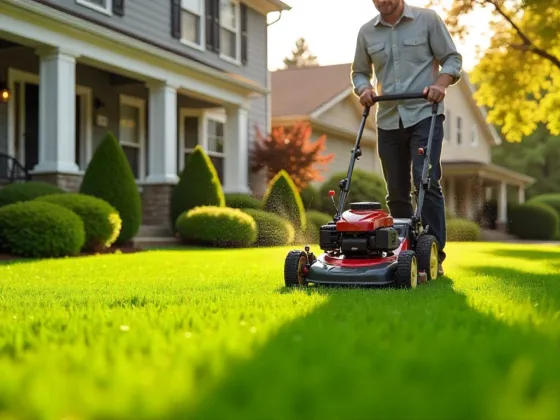Table of Contents Show
The first blast of heat in the summer causes your lawn to decline immediately. The extra heat causes more evaporation of the moisture in your soil and lawn so that you need to irrigate it using the best practices for summer lawn management.
You can conserve water in the summer and still have the lawn of the month sign in your yard.

Tips and Tricks for Water Conservation
Conservation of water while having a beautiful lawn in a hot summer or drought is a balancing act of many items. Water is one of the most precious and expensive commodities, especially when in a hot summer or drought condition. You can use tips and tricks to manage your water bill as well as your lawn.
Read Also:
Signs That Your Lawn Needs Water
If you notice, your lawn will actually tell you it needs water. The grass may appear dark blue or grayish and lose its normal green hue. At the point of the color change, water is needed immediately, especially in the case of a new lawn.
You can also tell if your lawn needs irrigating by noticing footprints in the grass after you walk on it. When grass doesn’t have enough water, it doesn’t spring back up after you walk on it.
Partial Watering Techniques
You don’t have to water the entire lawn if it doesn’t need irrigation. You can just hand water or use a hose-end sprinkler to add water to a section of your lawn that needs it. Areas that dry out the quickest are sandy locations, high spots or hills, and all areas adjacent to patios, driveways, and sidewalks.
Aerating Your Lawn
If you have the clay type of soil, the water doesn’t penetrate the ground very well and can even runoff into the street and wastewater while not adding water to the soil. You can aerate your lawn to help with this problem. An aerator punches holes in the lawn to allow water to penetrate the clay, make better use of your water, and prevent runoff.
Automatic Sprinkler Systems
Sprinkler systems work wonders for lawn irrigation, but you need to know how to operate them properly. It can save water if you turn the system off and operate each zone manually when you need to add water to your lawn.
Another solution to overwatering with an automatic system is to have a rain shut-off device installed. This device senses the rain and will not allow the system to run when it rains.
Check for Leaks
Any type of leaks in sprinkler heads, hoses, or hose-end sprayers can waste a lot of water. After you turn on a sprinkler, look at the connections and see if water is leaking. It may be a super simple fix of adding a rubber washer at the end of a hose.
The Best Time to Water Your Lawn
Water your lawn in the early morning hours for the best results. It is the most efficient and beneficial time to apply water. In the cool mornings, water evaporation is minimal so most of the water is used by your grass and plants and not released into the air.
Early morning irrigation also prevents most types of lawn diseases that form when the leaves remain wet and harbor fungus spores to spread to your entire lawn. After the sun rises, the leaves of your lawn will dry quickly to prevent lawn diseases.
How Often to Water Your Lawn
The best practice is to water deep and infrequently on a lawn. When you deliver deep watering that your soil can accept without any pooling or runoff, it moistens the root zone to about 3 to 4 inches deep. This will sustain the roots so they will reach downward for water and not remain on the surface.
The frequency of applying water is best done about every third day or every other day in a drought. This strategy also helps the roots to develop deeper in the soil and strengthen all of your lawn.
Stressful Summer Management Strategies
When the summer gives you less rain and it is very hot, there is more stress on your lawn. Thankfully, some techniques can help your lawn look its best while still conserving water.
Get a soil test done to evaluate it. Add the correct amounts of lime, phosphorus, and potassium to encourage deep roots and also drought tolerance.
If your thatch layers are thicker than a half-inch, dethatch the lawn with a machine. Heavy thatch layers contain more roots than soil and it makes the grass as a whole less tolerant to drought and more susceptible to heat injury from the hot summer sun.
Use natural fertilizers that are water-insoluble or slowly available or synthetic fertilizers that are slow release. These types of fertilizers use a certain type of nitrogen to promote a green lawn without an excess of leaf growth.
Raise the mowing height of your lawnmower in the summer. This encourages root growth and reduces heat stress by the leaves of grass staying longer and shielding the roots better.
Other Tips for Water Conservation in the Landscape
Many other simple things will allow you to save water and keep a great-looking lawn with lush greenery and beautiful plants. Choose drought-tolerant plants from a local nursery. When you buy from a local store, they carry the plants that do well in your exact zone for better success.
Apply compost and mulch to all of your flower beds. This will help to retain moisture in the beds so you will need to apply less water. It also keeps the ground cooler in the summer and shields roots from the sun and heat.
You can actually trap the rainwater that you receive in a simple rain barrel. Then you use this water to add additional water to your flowers and shrubs instead of using water from your hoses or watering cans.
When you put new plants, shrubs or flowers in a flower bed, use a gator bag or a deep watering system to apply water very slowly to establish the newly planted items. You can make something like this by punching four small holes in the bottom of a gallon milk jug, filling it with water, replacing the cap, and setting it on the ground near the planting area.
You can track the natural rainfall as a cue when you need to water your lawn and plants. Most all plants need 1 inch of water per week.
Even when you are watering by hand with a hose-end sprayer or a watering can apply the water slowly and deeply for the best results with strong roots and drought tolerance.
Use all of these tips and tricks to have a beautiful lawn all year round, even in the dog days of summer, and conserve water at the same time.









